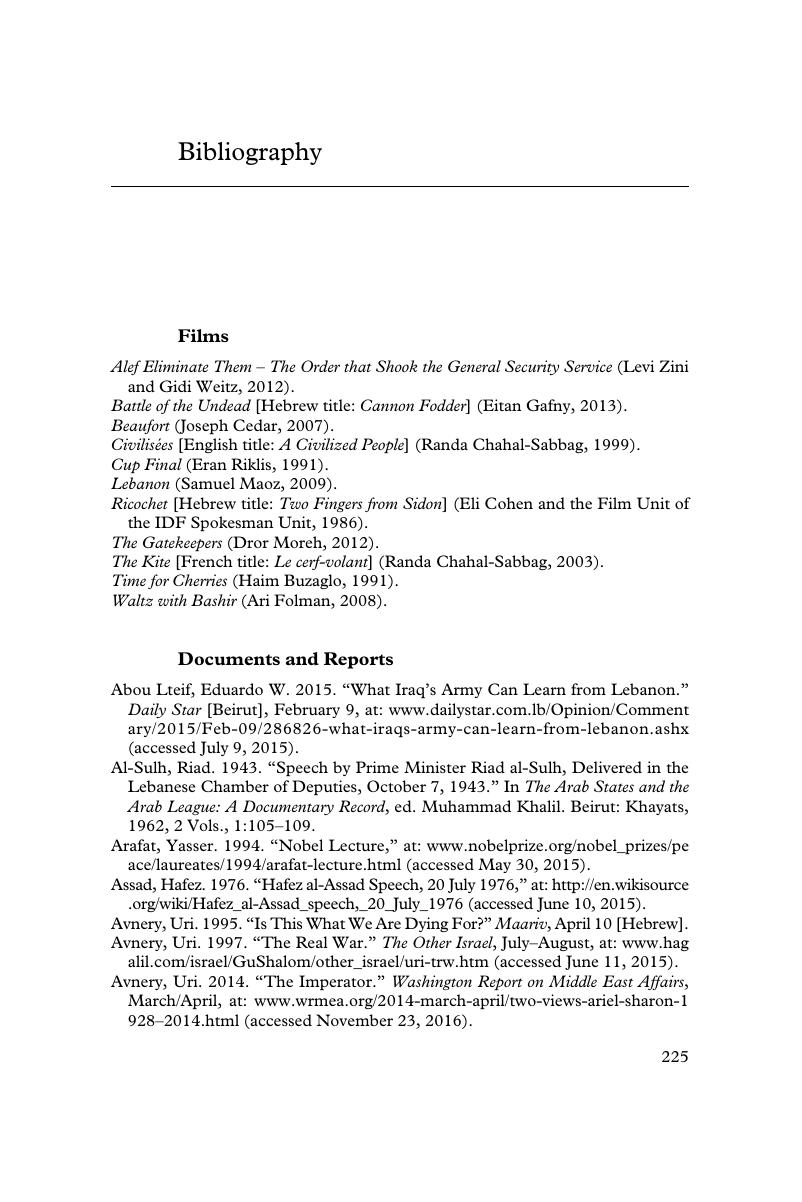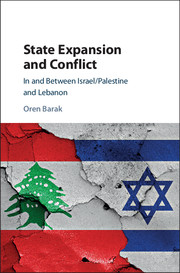Book contents
- State Expansion and Conflict
- State Expansion and Conflict
- Copyright page
- Dedication
- Contents
- Figures
- Tables
- Preface
- Acknowledgments
- Chronology
- Introduction
- 1 State Expansion and Its Effects
- 2 From Nation-States to Divided Societies: Lebanon and Israel/Palestine
- 3 Lebanon: Weak and Legitimate
- 4 Israel/Palestine: Strong and Illegitimate
- 5 Lebanon and Israel/Palestine Compared
- 6 The Deterioration of Israeli–Lebanese Relations
- 7 Two Conflicts Intertwined
- Conclusion
- Bibliography
- Index
- References
Bibliography
Published online by Cambridge University Press: 06 October 2017
- State Expansion and Conflict
- State Expansion and Conflict
- Copyright page
- Dedication
- Contents
- Figures
- Tables
- Preface
- Acknowledgments
- Chronology
- Introduction
- 1 State Expansion and Its Effects
- 2 From Nation-States to Divided Societies: Lebanon and Israel/Palestine
- 3 Lebanon: Weak and Legitimate
- 4 Israel/Palestine: Strong and Illegitimate
- 5 Lebanon and Israel/Palestine Compared
- 6 The Deterioration of Israeli–Lebanese Relations
- 7 Two Conflicts Intertwined
- Conclusion
- Bibliography
- Index
- References
Summary

- Type
- Chapter
- Information
- State Expansion and ConflictIn and between Israel/Palestine and Lebanon, pp. 219 - 224Publisher: Cambridge University PressPrint publication year: 2017



